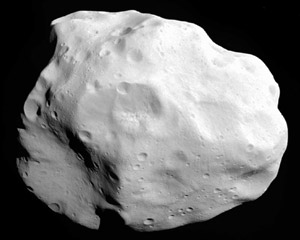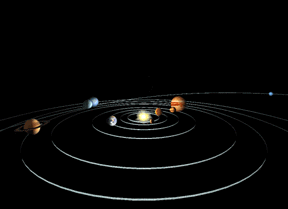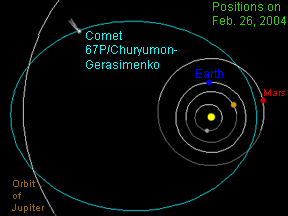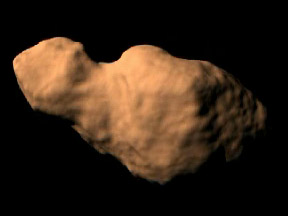Click on image for full size
Image courtesy of ESA 2010 MPS for OSIRIS Team MPS/UPD/LAM/IAA/RSSD/INTA/UPM/DASP/IDA.
Asteroid Lutetia
Lutetia is a medium-sized asteroid. It orbits the Sun in the main asteroid belt. The asteroid belt is between the planets Mars and Jupiter. Lutetia was discovered by Hermann Goldschmidt in Paris in 1852. Lutetia is the Latin name for Paris.
On average, Lutetia is about 96 km (60 miles) across. It isn't a sphere like a planet, though. Lutetia is 132 km (82 miles) across at the longest part. It is only about 76 km (47 miles) long in the shortest direction.
Astronomers aren't quite sure what Lutetia is made of. It may have more metal in it than most asteroids. Or maybe it is mostly rock, like most other asteroids. The material that an asteroid is made of gives us clues about how it formed.
A space probe named Rosetta flew past Lutetia in July 2010. Rosetta gave us our first good look at the asteroid. Lutetia is the largest asteroid visited by a spacecraft so far. Rosetta was zooming along at a speed of 15 km/s (9 miles/sec or more than 33,000 mph) when it flew by Lutetia! Rosetta sent some great pictures and lots of other data back to Earth. Rosetta's next stop is a comet.












